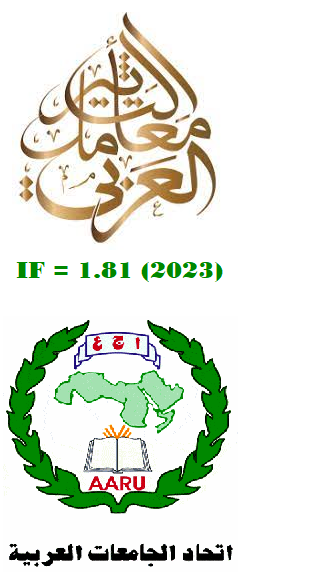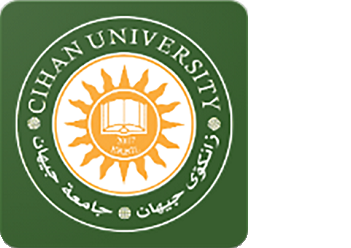The Possibility of Applying a Real Student- Centered Method in EFL Classes English Department, Cihan University
Abstract
The current research examined the possibility of applying a real student-centered method in EFL classes of the English department at Cihan University-Erbil, Kurdistan Region, Iraq. To this end, six lectures with different lecturers, different levels and also different subjects were observed in the English department of Cihan university. Some interviews were done with the lecturers and students before and after the lectures randomly in order to get some point from their views toward this novel method. The obtained data revealed that implementing a pure student-centered lecture is impossible and the lecturer need to apply a kind of eclectic method which is the mixture of student-centered and teacher-centered methods in such EFL classrooms.
Downloads
References
Alrabai, F., & Moskovsky, C. (2016). The relationship between learners’ affective variables and second language achievement. Arab World English Journal, 7(2), 77-103.
Bandura, A. (1997). Self-efficacy: The Exercise of Control. New York: Worth Publishers.
Brown, J.K. (2008). Student-centered instruction: Involving students in their own education. Music Educators Journal, 954, 110-115.
Burke, J.D. (1983). Teaching styles in college geography. Journal of Geography, 82(6), 255-256.
Burnard, P. (1999). Carl Rogers and postmodernism: Challenged in nursing and health sciences. Nursing and Health Sciences, 1, 241-247.
Dandoulakis, G. (1986). Towards a Student-Centered Teaching of English Literature. ERIC Document Reproduction Service No. ED274200.
Dewey, J. (1916). Democracy and Education. New York: The MacMillan Company.
Dewey, J. (1933). How We Think: A Restatement of the Relation of Reflective Thinking to the Educational Process. Lexington, MA: DC Heath.
Geisli, Y. (2009). The effect of student centered instructional approaches on student success. Procedia Social and Behavioral Sciences, 11, 469-473.
Gholami, M., & Ziafar, M. (2015). The effect of observe-hypothesize experiment method versus presentation-practice-production method on reducing pragmatic failure: The case of refusal speech act. Journal of Language Sciences and Linguistics, 38, 170-179.
Gravoso, R.S., & Pasa, A.E. (2008). Design and use of instructional materials for student-centered learning: A case in learning ecological concept. The Asia Pacific Education Researcher, 171, 109-120.
Jacobs, G.M., & Renandya, W.A. (2016). Student-Centered Learning in ELT. In: Renandya, W.A., & Handoyo, P., editors. English Language Teaching Today. Berlin: Springer. p326-450.
Kelly, J. (1985). Student-Centered Teaching for Increased Participation. ERIC Document Reproduction Service No. ED260033.
Kember, D. (1997). A Reconceptualization of the Research into University Academics Conceptions of Teaching. Learning and Instruction, 7(3), 255-275.
Khuvasanond, K. (2013). The Effects of Teacher vs. Student-Centered Instructional Strategies on the Vocabulary Learning of Sixth Grade Thai Students. Unpublished Doctoral Thesis. University of Kansas, Lawrence, United States of America.
Lak, M., Soleimani, H., & Parvaneh, F. (2017). The effect of teacher-centeredness method vs. learner-centeredness method on reading comprehension among Iranian EFL learners. Journal of Advances in English Language Teaching, 5(1), 1-10.
Nunan, D. (1999). Second Language Teaching and Learning. Boston, MA: Heinle and Heinle Publishers
Ogawa, M. (2001). Building Multiple Historical Perspectives: An Investigation of how Middle School Students are Influenced by Different Perspectives. (Doctoral Dissertation, University of Georgia, 2001). Dissertation Abstracts International, 62, 09A. p3010.
Olsen, R.E.W., & Kagan, S. (1992). About cooperative learning. In: Kessler, C., editor. Cooperative Language Learning: ATeacher’s Resource Book. Englewood Cliffs, NJ: Prentice Hall. p1-30.
Passman, R. (2000). Pressure Cooker: Experiences with Student-Centered Teaching and Learning in High-Stakes Assessment Environments. ERIC Document Reproduction Service No. ED440116.
Piaget, J. (1977). The Development of Thought: Equilibration of Cognitive Structures. New York: The Viking Press.
Quinn, P. (1990). Qualitative Evaluation and Research Methods. 2nd ed. London: Sage Publication Ltd.
Schiller, S.Z. (2009). Practicing learner-centered teaching: Pedagogical design and assessment of a second life project. Journal of Information Systems Education, 20, 369-381.
Stout, M.J. (2004). Students as Historical Detectives: The Effects of an Inquiry Teaching Approach on Middle School Students’ Understanding of Historical Ideas and Concepts. Doctoral Dissertation, University of Maryland College.
Park, 2004. Dissertation Abstracts International, 65, 11A. p4095.
Taylor, P.G. (2000). Changing expectations: Preparing students for flexible learning. The International Journal of Academic Development, 5(2), 107-115.
Zohrabi1, M., Torabi, M.A., & Baybourdiani, P. (2012). Teacher Centered and/or Student-Centered Learning: English Language in Iran. English Language and Literature Studies, 2(3), 18. Available from: http://www.ccsenet.org/journal/index.php/ells/article [Last accessed on 2022 May 10].
Copyright (c) 2022 Marjan Abbasian

This work is licensed under a Creative Commons Attribution-NonCommercial-NoDerivatives 4.0 International License.
Authors who publish with this journal agree to the following terms:
1. Authors retain copyright and grant the journal right of first publication with the work simultaneously licensed under a Creative Commons Attribution License [CC BY-NC-ND 4.0] that allows others to share the work with an acknowledgment of the work's authorship and initial publication in this journal.
2. Authors are able to enter into separate, additional contractual arrangements for the non-exclusive distribution of the journal's published version of the work (e.g., post it to an institutional repository or publish it in a book), with an acknowledgment of its initial publication in this journal.
3. Authors are permitted and encouraged to post their work online (e.g., in institutional repositories or on their website) prior to and during the submission process, as it can lead to productive exchanges, as well as earlier and greater citation of published work (See The Effect of Open Access).









